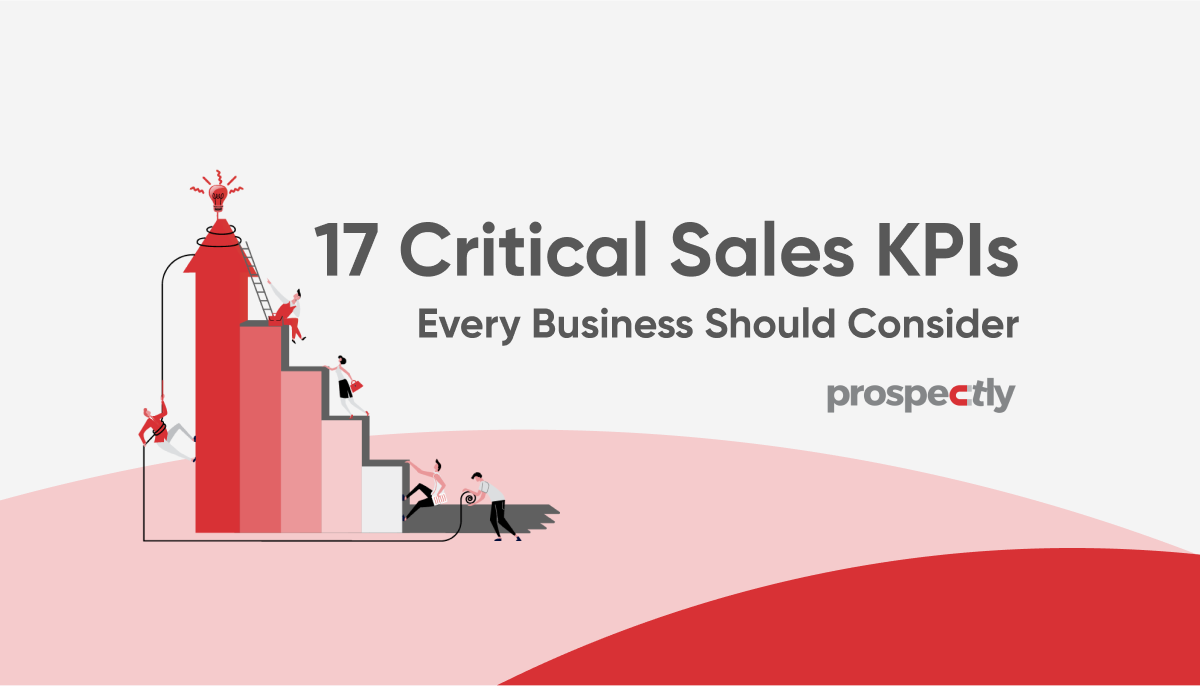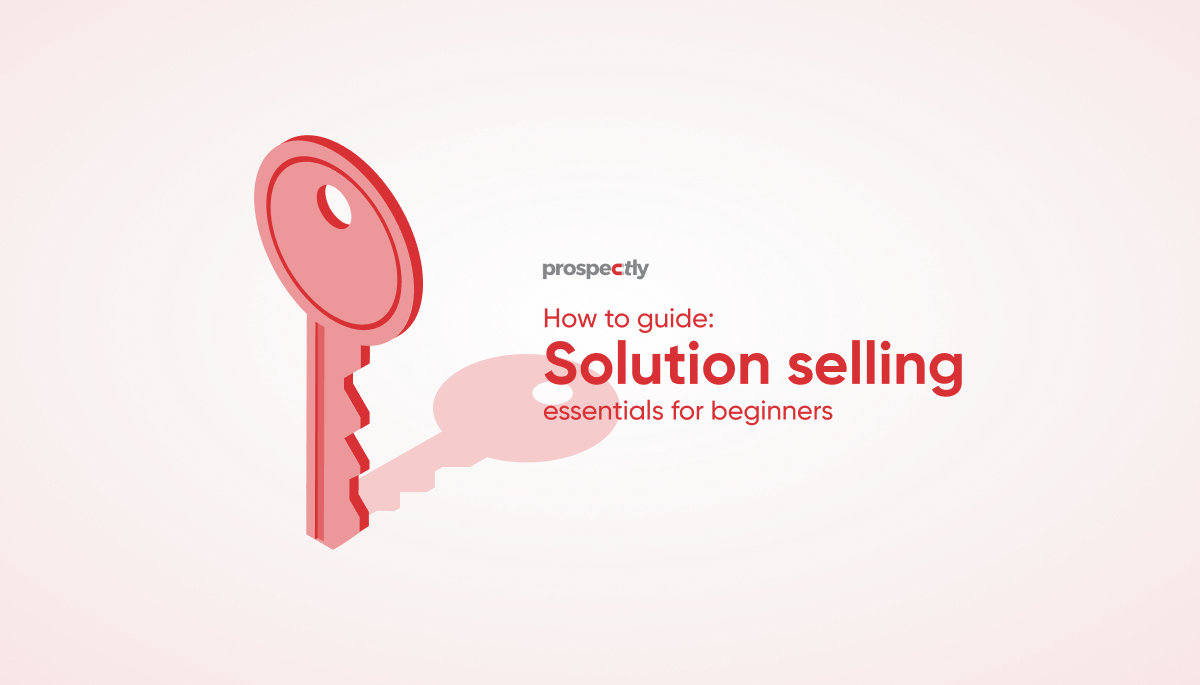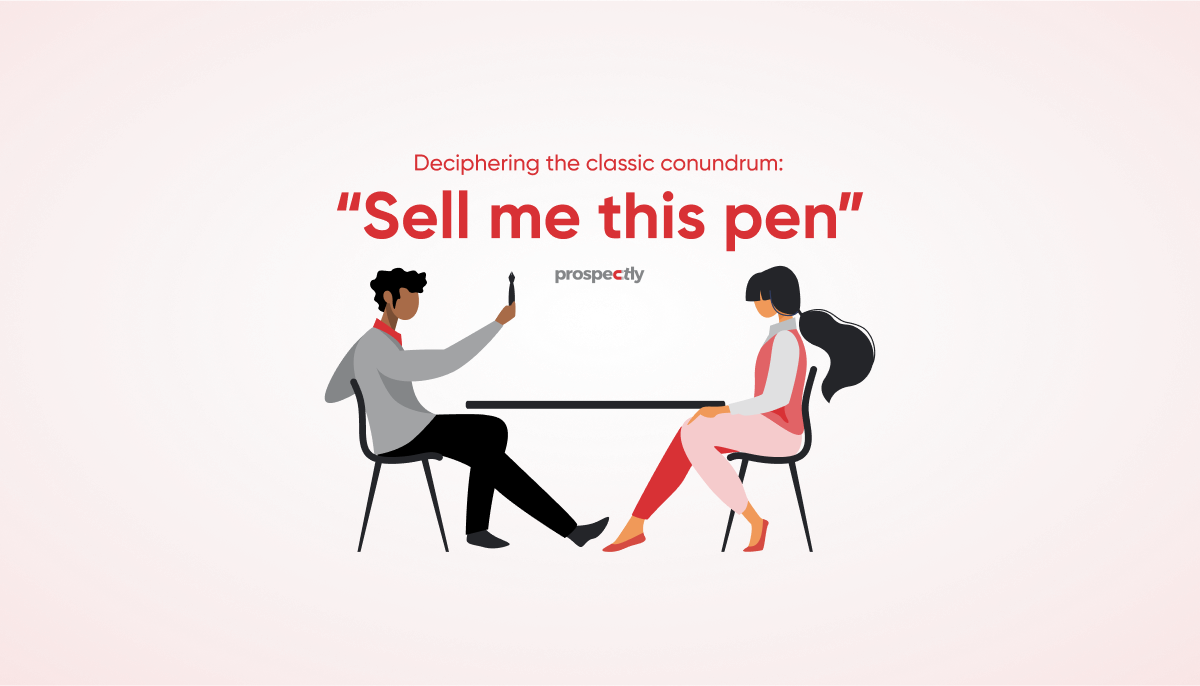9 Sales methodologies: How to win buyers and influence sales
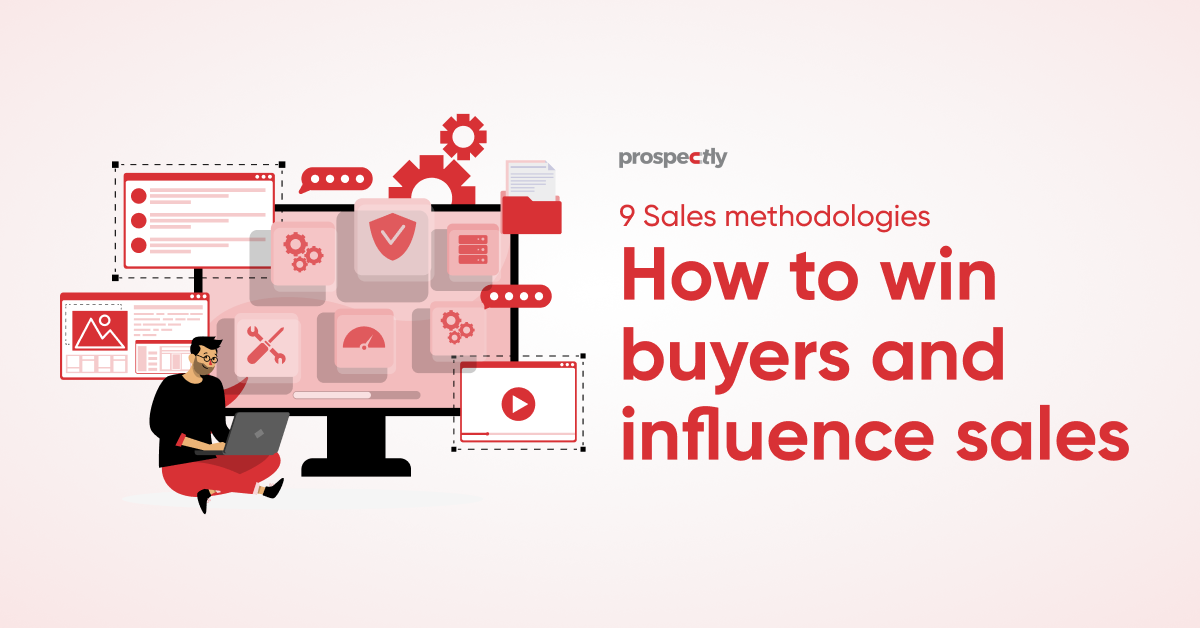
TurborPower is a pack of fast charging devices from Motorola. You can power up your android smartphone quickly. A sales methodology is the TurboPower behind a sales process. Sales models can help your sales team shorten the sales cycle to win customers and close more deals.
Many individuals or organizations have developed multiple sales methodologies to empower sales reps to execute their plans. Notable names, like David Sandler, gave birth to robust selling approaches that sellers still use today. Discover how you can take advantage of these sales models in this ultimate guide to energize your sales process.
It’s always a brilliant idea to start with a sales methodology definition to help you grasp the whole concept. Here it is.
What is a sales methodology?
A sales methodology is the practical way to win more customers at each stage of the sales process. See it as a GPS that shows you how to arrive at your destination on the shortest and fastest route.
Your salesforce may know all the steps in the sales cycle. But they also need a set of guiding principles or rules on influencing buyers to close. Enter the sales methodology.
Also called sales models, sales methodologies borrow principles from psychology to empower salespeople with a winning formula. However, are they similar to a sales process? No.
Sales methodology vs. sales process
A sales process involves several repeatable steps that your sellers take to make a sale. Typically, the sales cycle includes prospecting, preparation, approach, presentation, handling objections, closing, and follow-up.
On the other hand, a sales model is the execution plan or strategy or the ‘how-to-guide’ behind the sales process. These two sales systems work together to help your company improve sales.
Want to refresh and reboot your memory about how to build a sales process from scratch? You can feast on the ultimate deal on the sales cycle.
Why is a sales methodology critical for your sales teams?

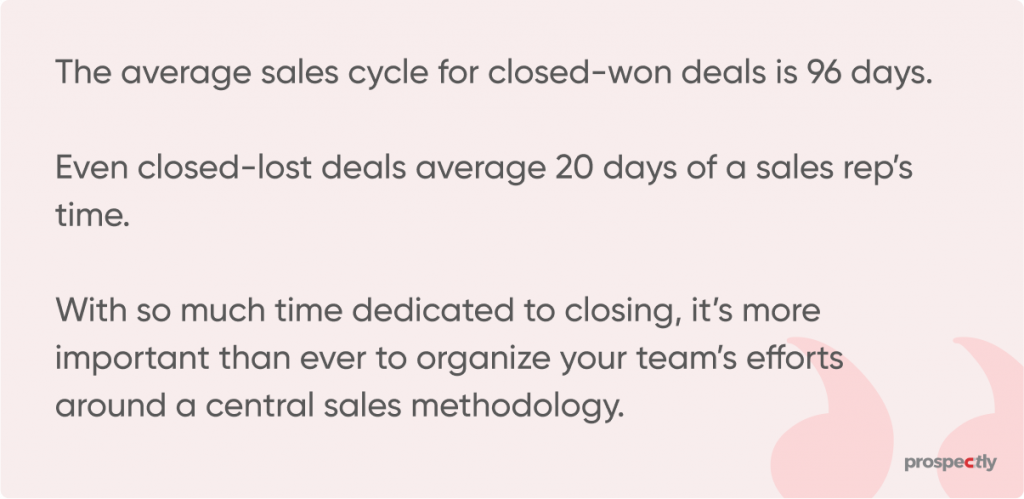
With these thoughts, let’s jump into the nine sales methodologies for your business to explore.
9 Types of sales methodologies
What are the sales methodologies? There are multiple sales methodologies but we shall zero in on the nine most popular ones.
1. Inbound selling
Inbound selling is a sales methodology that puts the potential customer front and center of the buying process. Instead of hunting for clients through cold emails, reps wait for buyers to make the first move. After interacting with the business via the website, chatbot, downloads, sellers reach out to prospects.
It’s a marketing technique where your salesforce should understand the customers’ buying behavior from awareness to closing. The knowledge allows the sales representatives to craft the right messages to captivate buyers. As a result, inbound selling is a data-driven sales approach.
Sellers analyze social media engagements, likes, views, comments, and conversions to personalize messages.
What are the four stages of the inbound sales methodology? Salespeople can use the following ways to persuade prospects to be buyers.
1. Identify-Reps sift through data to look for customers who’ve engaged with your company via sign-ups, social media, live chats, online community groups, etc. These are likely customers who’ve shown interest in your products or service.
2. Connect-It’s time to initiate conversations with the active buyers through personalized messages. Sellers connect with potential customers around their likes, preferences, and needs. Blogging, holding online events, or commenting on Twitter are examples of connecting with prospects.
3. Explore-Inbound sales reps provide more valuable info on how their products/service can solve the prospect’s pain points. Representatives show buyers why the company’s offer is the perfect fit for their goals.
4. Advise-Some customers have requested a product demo at this stage. So, reps use convincing sales pitches to win a sale.
Pros: Inbound selling is less pushy and sales-sy. It’s budget-friendly because sellers focus on interested prospects.
When to use it: It’s effective when you blend it with an inbound marketing strategy, like web-based seminars (webinars), viral videos, etc.
2. SPIN selling
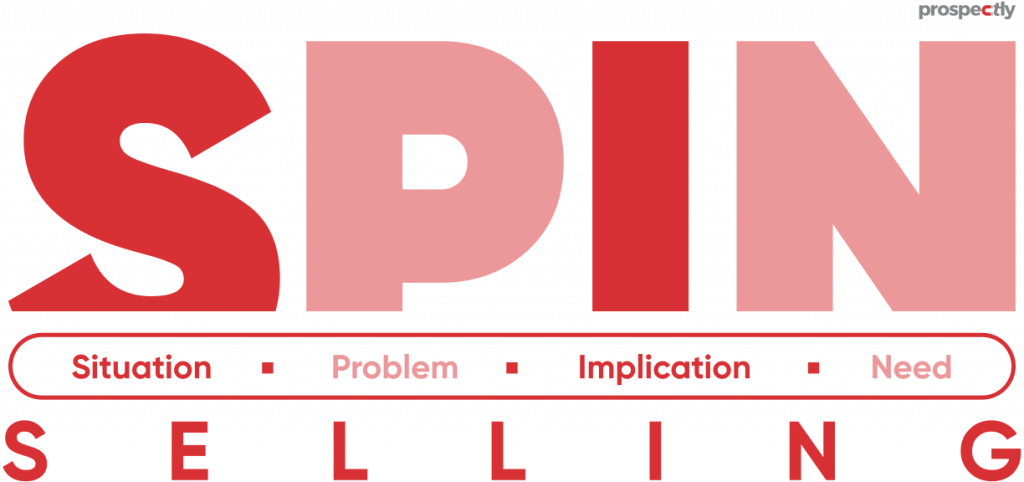
Neil Rackham is the brainchild of this sales methodology after a 12-year research of 35, 000 sales calls. The behavioral psychologist founded SPIN Selling in 1998. It’s a method that emphasizes asking prospects the right questions to dig deeper into their goals and challenges.
SPIN is an acronym standing for situation, problem, implication, and need-payoff. And the following breakdown shows you what each element means for the seller.
Situation questions: First, the sales representative should understand the customer’s current environment by asking the right questions. Questions could be about the job, business climate, project, etc.
Examples include: How do you currently manage projects? What are your favorite tools? Have you used them for a long time?
Problem questions. You ask these questions to determine how the situation has led to the pain points. They help you uncover opportunities and highlight the product benefits that fix the problem.
You could say, “When working on a project, how well do you maintain communication channels?
Implication questions: You want to rub salt on the wound, as it were. Reps point out possible outcomes if the buyer fails to accept the solution. What is the result of that problem? What will happen to the prospect if the situation isn’t resolved? How will they be affected?
Need-payoff: At this point, salespeople use need-payoff questions to guide the buyer in discovering the solution benefits themselves. They could say: “Would X result in significant revenue, profit, or productivity changes?”
Pros: The SPIN Selling approach is handy for sales representatives to learn more about the likely buyer’s primary pain points. They can develop a genuine relationship with clients. It’s also ideal for complex B2B sales.
When to use it: It’s an effective sales methodology where the customer isn’t aware of their problem and the effect of not fixing it.
Sales discovery questions can empower your salesforce to uncover the customer’s challenges and desires.
3. The Challenger sales model
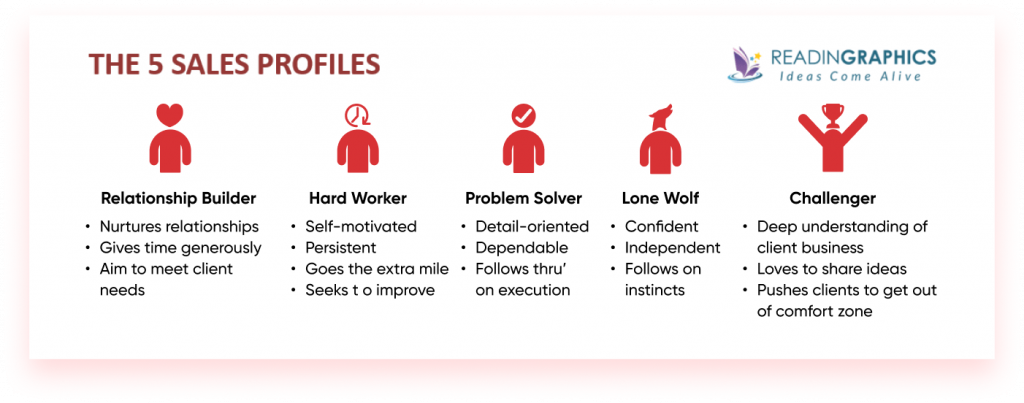
The sales model comes from the teachings of The Challenger Sale (2011) by Mathew Dixon and Brent Adamson. It’s a selling approach that puts the rep at the center of the buying process by playing the role of a tutor or teacher. They focus on educating the customer about what they’re not aware of or should know.
The seller should understand the prospect’s industry and pain points as an expert. They set out to teach the potential client how to solve the problems and persuade them to take up the solution. The rep takes control of the situation and challenges the prospects with validated offers.
Also, the sales methodology groups the salesforce into five domains:
Relationship builder: The seller emphasizes building relationships to win customers.
Hard worker: They’re self-motivated and keen on personal development. They’ve got a never-give up-attitude.
Problem solver: They are interested in solving the customer’s challenges by digging deeper into the prospect’s situation.
Lone wolf: As the name suggests, they value independence and prefer solo selling. They can deliver results but are challenging to monitor.
Challenger: They have high motivation and ooze confidence due to their expert business knowledge.
Pros: Reps can use the selling method to differentiate their solution from competitors. With good coaching, anyone can learn to be a Challenger.
When to use it. It’s ideal for businesses that want to be experts or advisors to their customers. Sellers can use the Challenger sales model with prospects who need more practical solutions and advice in B2B selling environments.
Sales meetings are a great way to train your salespeople to use the Challenger Sales Models.
4. Solution selling
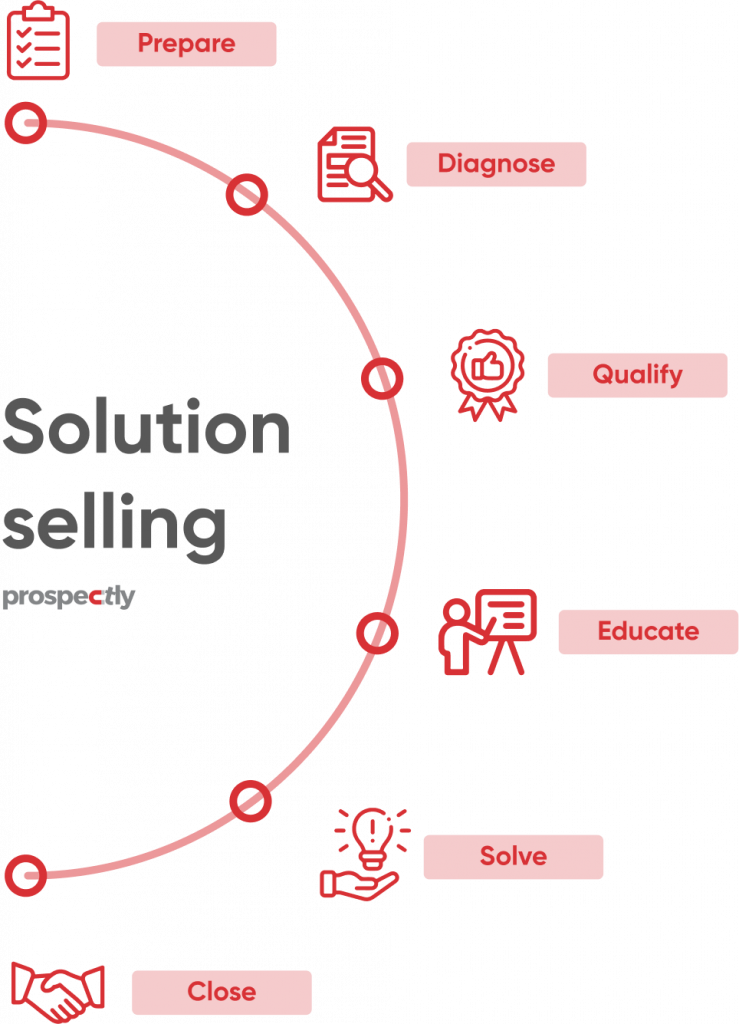
Developed by Max Bosworth, Solution Selling follows a straightforward principle. The sales representative should be aware of the prospect’s challenges and then present the company’s products as the solution. It’s similar to SPIN Selling which seeks to uncover the pain points and then offer a solution.
The sales approach also concentrates on the product benefits and effectiveness in fixing the customer’s problems. Here are some ways reps can use this strategy.
Prepare: You unearth the main pain points that your customer is experiencing in their industry via research before you contact them.
Diagnose: Learn more about the prospect through discovery sales questions. You want to know their exact problems to let you diagnose the root causes.
Qualify: Find out if the customer is ideal for your solution by asking qualifying questions.
Educate: Now that you’ve remained with the perfect prospect teach them how your product can benefit them. Use customer testimonials, case studies, and numbers to strengthen your case.
Solve: This stage of the sales model presents insights to the client on how your offer can make them achieve their goals.
Close: Respond to objections by restating the product benefits as you close.
Pros: Solution Selling is empathetic because it wants to understand the customer’s problems and then shows why your product is the right solution. It makes the rep less pushy.
When to use it: Your company should have a library with case studies and data to help sellers validate their offers. It’s perfect for businesses with customized products and complex B2B sales.
5. Customer-centric selling
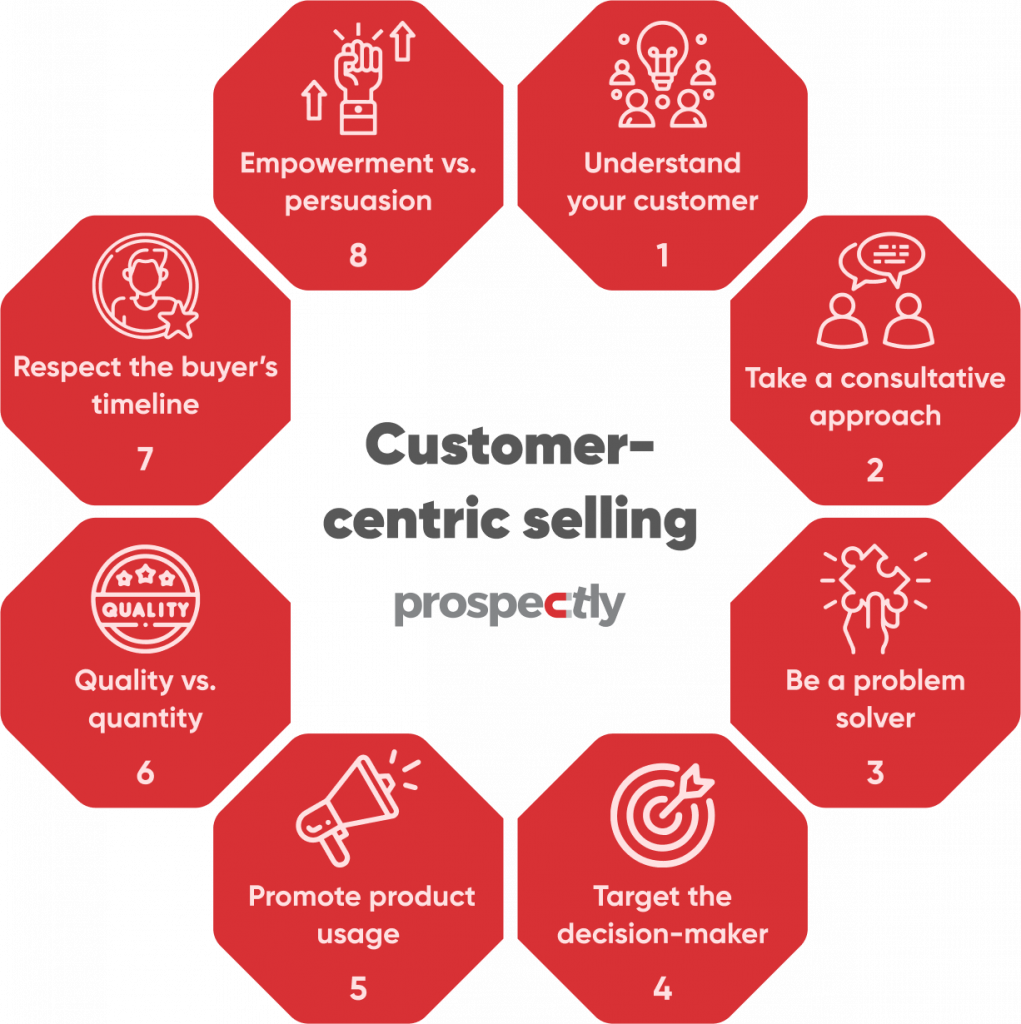
Mike Bosworth, Gary Walker, Frank Visgatis, and John Holland birthed the Customer-Centric Selling sales methodology. The selling approach makes the buyer the primary focus throughout the sales cycle. Before recommending a solution, reps need to appreciate the prospect’s challenges, context, needs, preferences, questions, and priorities.
You avoid imposing a solution or opinions, but you play the role of a consultant and trusted advisor. Sellers empower the customer with knowledge to make buying easy instead of persuasive and pushy selling.
Here are some things to consider with this sales model.
Customer’s situation
Understand the prospect’s background, their situation, and what they need. Have a conversation around these areas to help provide the customer’s solution. You should adapt your offer to match their experiences.
Consultancy
The Customer-Centric Selling sales model requires you to be an active and empathetic listener by asking relevant questions. You want to know the likely buyer’s interests.
Problem-solver
As a trusted advisor for the customer, you should provide a solution to fix the pain points. The offer needs to align with the prospect’s situation.
Decision-makers
The product’s use and how it can solve the potential customer’s present circumstances are the main focus of the customer-centric selling approach. Because of this, you should target the decision-makers and not the end-user with this method.
Product usage vs. features
Sales reps also need to demonstrate how to improve the prospect’s life. Talking about product features isn’t helpful with this strategy.
Quality vs. quantity
Concentrate on a few customers to apply all your time, resources, and effort to be the best seller. The idea is not to chase quantity because you may fail to be customer-centric.
The buyer’s timeline
Recall that the selling approach puts the prospect at the center of everything in the sales process. As a result, you ask for a sale at their time and schedule. Your role is to move according to the buyer’s timeline.
Empowerment vs. persuasion
Sell the product’s solution rather than the product itself. It means you say little about how great your product is. But you demonstrate how your offer is the right match for the problem. You become the client’s best advocate.
Pros: The Customer-centric sales methodology makes the customer central in the buying process. Reps can build robust relationships by offering a solution that their clients want. Also, they can walk away if the customer rejects the offer.
When to use it: It’s perfect for any B2B with complex sales.
A well-planned sales cadence can help sellers implement the Customer-centric approach successfully.
6. The Sandler sales method
It’s a sales model named after David Sandler, who developed the selling approach to focus on long-term relationships with customers. Salespeople zero in on qualifying prospects and build win-win relations with them. Also, reps become trusted advisors who’re more interested in solving their customers’ pain points. Because of this, they avoid quick fixes and high-pressure selling tactics.
The Sandler sales methodology has several essential elements or steps:
- Form a bond and establish rapport
- Identify roles and responsibilities
- Identify the prospects’ needs and concerns
- Determine the prospect’s budget and whether or not they can fix the issue
- Learn how buyers make decisions
- Provide a solution using your product
- Close the deal
To understand the customer’s problems, sales representatives should listen more than talk non-stop. As a result, they can create a solution that suits their prospect.
Pros: Its strength lies in developing mutually beneficial relationships with prospects. Customers feel that they’re part of the solution as they decide to buy.
When to use it: It’s suitable for businesses with complex sales processes. You can adapt it for many selling situations.
7. N.E.A.T selling
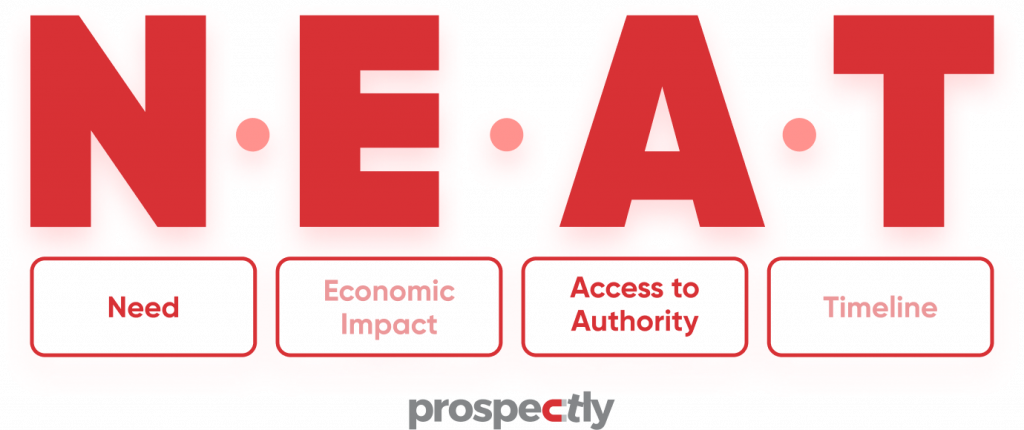
As a sales methodology, N.E.A.T. helps sellers qualify their potential buyers. It shows reps where they should spend their time and resources in the sales cycle to close a sale. The Harris Consulting Group and Sales Hacker Inc. developed the approach to improve the BANT sales system (budget, authority, need & timing).
N.E.A.T. represents:
Need: What is the prospect’s primary need. What is causing the potential customer the most pain?
Economic impact: How does the prospect’s pain affect their finances? What benefits would they receive from finding a solution?
Access to authority: Who is responsible for making decisions, and where can the rep find that person?
Timeline: What is the realistic timeline to complete the deal. If the client wants the product live by a specific date, what is the anticipated timeline?
Pros: You can use it for straightforward and complex sales processes. It empowers salespeople to qualify how much they can assist the customer.
When to use it: Qualifying prospects requires a process that addresses their concerns and prioritizes solutions based on their needs.
8. SNAP selling
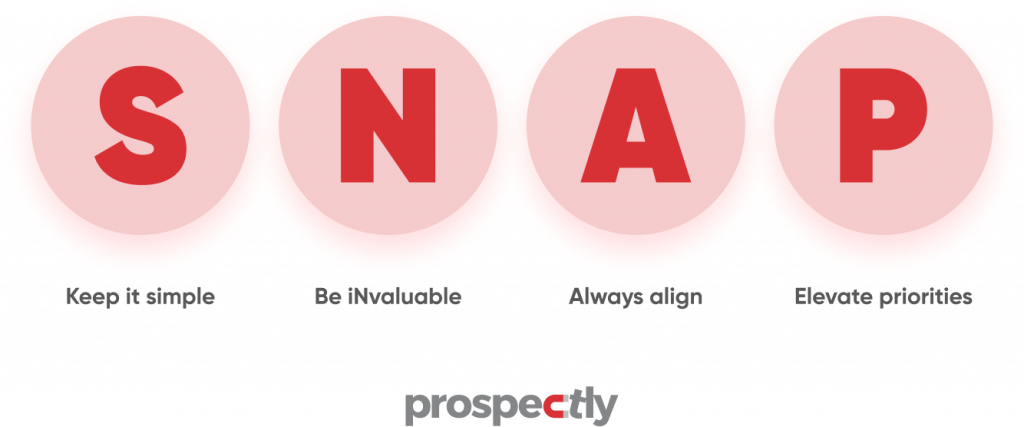
SNAP Selling came out of a book by Jill Konrath entitled ‘SNAP Selling: Speed Up Sales and Win More Business With Today’s Frazzled Customers’. The selling model recognizes that people are busy and overwhelmed with information. Because of this, they’re distracted, confused, and have no time for a lengthy buying process.
The seller can grab the prospect’s attention and close a sale by keeping things simple and providing essential information. Also, they can speed up the sales process and clinch a deal before the prospect slips through their fingers.
SNAP is based on four principles:
S-Keeping it simple: Busy buyers appreciate you being straight to the point and supplying only the information they need.
N-Be iNvaluable: As a trusted expert for the customer, show how your product can make their lives better.
A-Always align: Make your solution relevant by aligning it with the prospect’s goals and needs.
P-Elevate priorities: Clarify to the likely buyer why your offer is the top priority for their challenge. Develop a sense of urgency around your product.
Pros: The Salesperson can understand the customer and their situation. As a result, they can offer the right solution.
When to use it: It’s perfect for distracted, busy, and frazzled buyers.
9. MEDDIC sales methodology
MEDDIC Sales model is a strategy for customer qualification in complex sales. It comes in handy in helping sellers determine if it’s worthwhile to pursue specific leads. Parametric Technology Corporation developed the selling approach in the 1990s, and it stands for the following:
Metrics: Can you quantify the impact of the solution?
Economic buyer: Who’s the decision-maker in the company you’re interacting with?
Decision criteria: What requirements does the organization use to choose a vendor?
Decision process: How does the company make the decisions? What are the timelines?
Identify pain: What are the customer’s problems that your offer can solve? What are the results of not fixing the pain point?
Champion: Who’s the key person in the organization who wants to achieve your goals?
Pros: MEDDIC sales reps can identify the ideal buyer for their products/services. Because of this, they can increase their chances of closing a sale.
When to use it: The selling approach is perfect for finding the right people in B2B complex selling environments.
What is the best way to implement a sales methodology? You can use the following six steps to launch your sales methodology.
How to implement your sales methodology in 6 steps
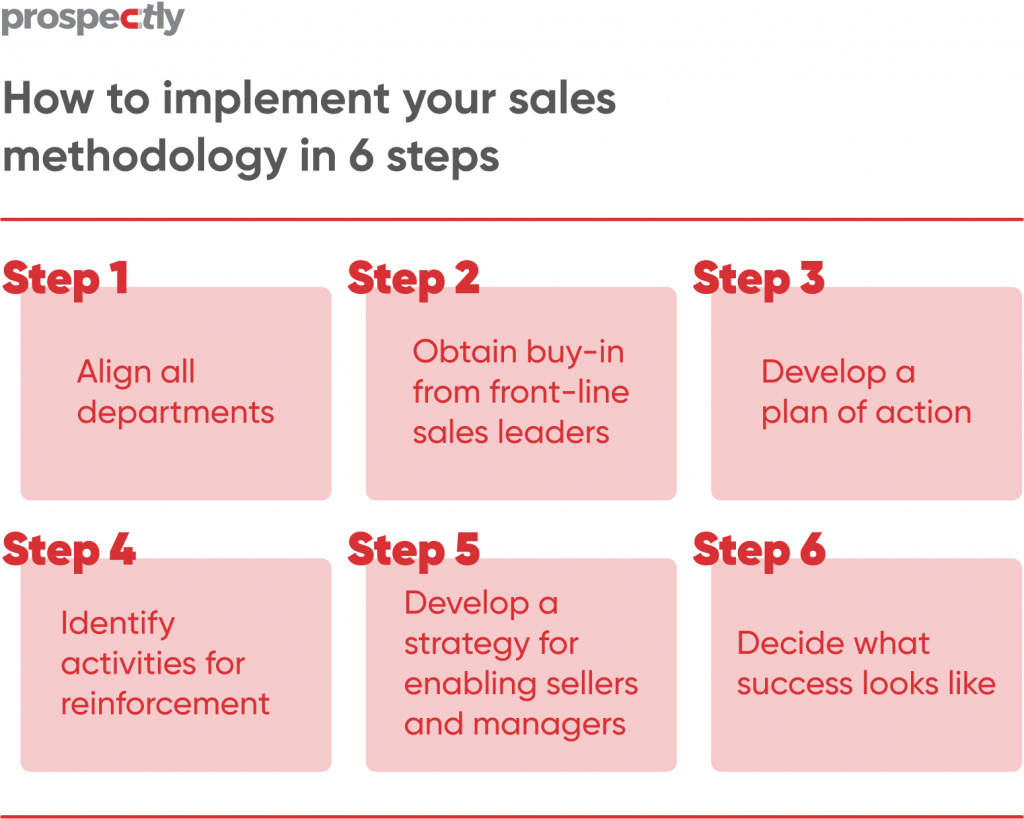
Step 1. Align all departments
Each leader in your organization should be clear on their role in the sales methodology you’ll implement. It means departmental heads from product marketing, sales training, customer success, marketing, sales enablement, and field sales reps must get involved and have a specific task.
For example, someone will create the training materials, measure the results, etc.
Step 2. Obtain buy-in from front-line sales leaders
The salesforce should have confidence in the sales methodology that your company selects. That’s because salespeople are responsible for the plan’s execution. It makes sense to ask for feedback to hear their views about the selling approach.
Sales managers can use data to find gaps in the reps’ skills and then use a particular sales model to improve these weak areas.
Step 3. Develop a plan of action
Not everyone in the company is ready for a change in how they do things. Introducing a ‘new’ selling approach may scare some people or meet resistance. It’s crucial to prepare every staff for adjustment in the sales methodologies.
You can have group or individual meetings with all the primary stakeholders before the rollout of the sales model. Explain why there is a need for adjustments during the sessions.
Step 4: Identify activities for reinforcement
Launching the sales methodology is the first step, but you need to keep the momentum to avoid lapses. One way is for sales managers to activate coaching programs for frontline workers to ensure they get enough support. Sales coaching can also lead to skyrocketing performance.
Step 5: Develop a strategy for enabling sellers and managers
Salespeople and their managers should have training materials and tools to help them use the selling approach. CRM software, sales enablement apps, and training modules can enable employees to be productive.
Step 6: Decide what success looks like
Measuring the results of the sales model is vital. Business owners should decide on the metrics to assess the sales methodology’s effectiveness and ROI. They can consider revenue, but some factors can affect it.
You can use other supportive metrics, such as rep’s retention rate and effectiveness, deal sizes, effect on sales cycle times, etc. It would be helpful to collaborate with the operations to work out the metric’s parameters, the frequency, and the evaluation of the numbers.
Final thoughts
Sales methodologies are the how-to guides behind a sales cycle or the strategies for sellers on h0w to win prospects to close more deals. Companies are different, so are their needs, situations, and sales models. The best selling approach is one that fits perfectly with what your sales team needs to excel and boost revenue.
